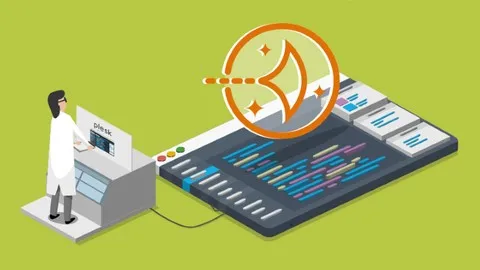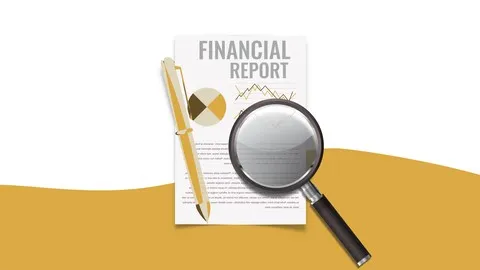
Free WordPress Tutorial - Make WordPress Hosting Easy with Plesk on Amazon Lightsail 
This free tutorial provides step-by-step instructions on how to host a WordPress website on Amazon Lightsail and use Plesk to simplify WordPress WebOps. Get started today and make WordPress hosting easy. ▼
ADVERTISEMENT
Course Feature
![]() Cost:
Cost:
Free
![]() Provider:
Provider:
Udemy
![]() Certificate:
Certificate:
No Information
![]() Language:
Language:
English
![]() Start Date:
Start Date:
Self Paced
Course Overview
❗The content presented here is sourced directly from Udemy platform. For comprehensive course details, including enrollment information, simply click on the 'Go to class' link on our website.
Updated in [March 06th, 2023]
This course provides an overview of how to use Amazon Lightsail and Plesk to create and manage a WordPress website. Participants will learn how to set up a private virtual server on Amazon Lightsail, create a new WordPress website or migrate an existing one to the server, and use the Plesk WordPress Toolkit extension to secure, update, and maintain the website. By the end of the course, participants will have the knowledge and skills to easily host and manage a WordPress website.
[Applications]
The application of this course can be seen in the ability to create a private virtual server on Amazon Lightsail using the Plesk hosting platform. This course also provides the knowledge to create a new WordPress website or migrate an existing one to the new server. Additionally, the Plesk WordPress Toolkit extension can be used to secure, update, and maintain the WordPress website. With the knowledge gained from this course, users can confidently create and manage their own WordPress websites.
[Career Paths]
1. Web Developer: Web developers are responsible for creating and maintaining websites. They use a variety of programming languages and technologies to create websites that are both functional and visually appealing. Web developers must be able to understand user needs and design websites that meet those needs. With the increasing popularity of WordPress, web developers must be familiar with the platform and its associated technologies.
2. WordPress Developer: WordPress developers specialize in creating and maintaining WordPress websites. They must be familiar with the WordPress platform, its features, and its associated technologies. WordPress developers must be able to customize WordPress websites to meet the needs of their clients. They must also be able to troubleshoot any issues that arise with WordPress websites.
3. WordPress Designer: WordPress designers are responsible for creating the visual design of WordPress websites. They must be familiar with the WordPress platform and its associated technologies. WordPress designers must be able to create visually appealing designs that meet the needs of their clients. They must also be able to troubleshoot any issues that arise with WordPress websites.
4. WordPress Consultant: WordPress consultants are responsible for providing advice and guidance to clients on how to use WordPress. They must be familiar with the WordPress platform and its associated technologies. WordPress consultants must be able to provide advice on how to optimize WordPress websites for search engine optimization and other marketing strategies. They must also be able to troubleshoot any issues that arise with WordPress websites.
[Education Paths]
1. Bachelor of Science in Computer Science: This degree path focuses on the fundamentals of computer science, such as programming, software engineering, and computer architecture. It also covers topics such as artificial intelligence, machine learning, and data science. This degree path is ideal for those who want to develop their skills in web development, software engineering, and database management.
2. Bachelor of Science in Information Technology: This degree path focuses on the application of technology to solve business problems. It covers topics such as network security, database management, and software development. This degree path is ideal for those who want to develop their skills in web development, software engineering, and database management.
3. Master of Science in Web Development: This degree path focuses on the development of web applications and websites. It covers topics such as web design, web programming, and web security. This degree path is ideal for those who want to develop their skills in web development, software engineering, and database management.
4. Master of Science in Information Technology: This degree path focuses on the application of technology to solve business problems. It covers topics such as network security, database management, and software development. This degree path is ideal for those who want to develop their skills in web development, software engineering, and database management.
Course Syllabus
Introduction
Signing up with Amazon Web Services
Deploying a Lightsail Instance with Plesk Onyx
Attaching a Static IP to Your Lightsail Instance
Connecting via SSH from Windows
Connecting via SSH from macOS or Linux
Logging in to Plesk Onyx for the First Time
Overview of the Plesk Platform
Pointing Your Domain's DNS to Your Lightsail Instance
Securing Your Plesk Server
Before we continue...
Introducing WordPress Toolkit
Creating a New WordPress Website
Importing Your Existing WordPress Website to Plesk
Managing a Remote WordPress Website
Securing Your WordPress Websites
Updating WordPress on Your Website
Setting up Automatic Updates for WordPress Websites
Creating a Staging Environment
Publishing from Staging to Production
Introduction
Setting Up the Domain's Mail DNS Records: MX, SPF, DKIM
Why You Need a Mail Relay and Signing Up with Mailjet
Authenticating Your Domain With Mailjet
Reconfiguring the Postfix Mail Server
Setting Up WordPress to Send Mail through Plesk's Mail Service
Thank You and Good Bye!
Pros & Cons

Easy and straightforward explanation.

Well structured and explained.

Excellent overview on WP hosting and management.

Quick and concise explanation.

Free course.

Didn't work for some users.

Not enough detail.

Not suitable for all businesses.

Not enough knowledge gained.

Not enough time to explore.
Course Provider

Provider Udemy's Stats at AZClass
Discussion and Reviews
0.0 (Based on 0 reviews)
Explore Similar Online Courses

Level I CFA Prep Course 2023 - Financial Statement Analysis

Coaching the Mental Game

Python for Informatics: Exploring Information

Social Network Analysis

Introduction to Systematic Review and Meta-Analysis

The Analytics Edge

DCO042 - Python For Informatics

Causal Diagrams: Draw Your Assumptions Before Your Conclusions

Whole genome sequencing of bacterial genomes - tools and applications

WordPress Academy: Learn WordPress step by step

WordPress 2023: The Complete WordPress Website Course

How to Make a WordPress Website in 2017
 Related Categories
Related Categories
 Popular Providers
Popular Providers
Quiz
 Submitted Sucessfully
Submitted Sucessfully
1. What is the main purpose of this course?
2. What is the Plesk WordPress Toolkit extension used for?
3. What type of virtual server is used in this course?
4. What is the Plesk WordPress Toolkit extension?
Correct Answer: It is used to secure, update, and maintain WordPress websites.


Start your review of Free WordPress Tutorial - Make WordPress Hosting Easy with Plesk on Amazon Lightsail